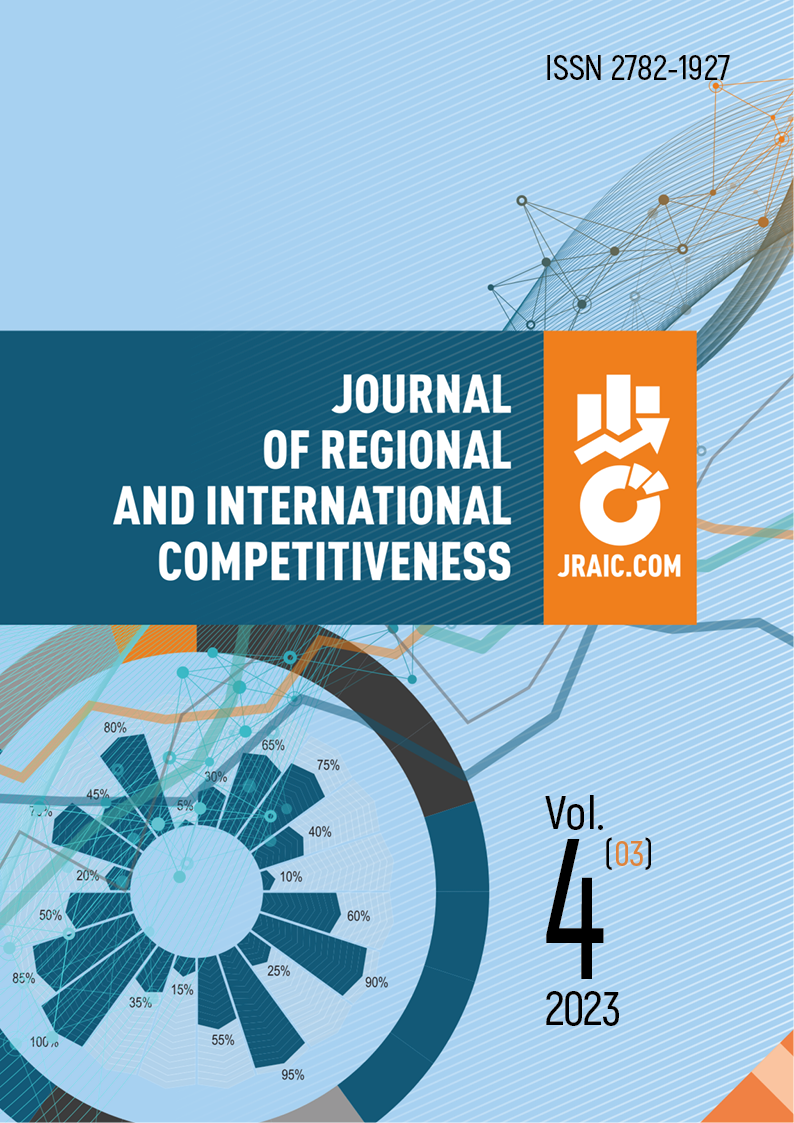Ярославль, Ярославская область, Россия
Ярославль, Россия
Integration processes generate so-called "spillover effects", which have an impact on the welfare of the population of the countries involved in integration processes. The purpose of the study is to assess the inflationary channel of the integration spillover effects on the EAEU member countries population welfare. The hypothesis of the study is that there should be an inverse (statistically significant) relationship between inflation in Russia and the EAEU member countries population welfare. "Inflationary shocks" coming from the Russian economy (through the channel of mutual trade); in the conditions of open borders in the EAEU space it will spread to the Union States. At the same time, they will reduce the population living standards through the growth of Consumer price index, increase in Gini index, decrease in average monthly net salary (after tax), and Human Development Index. We used correlation analysis to test the hypothesis proposed. As a result, the hypothesis proposed in the paper was generally not confirmed by the data characterising the EAEU member states economy over the long term time period. The data analysis showed that inflation in Russia has no impact on the population living standards in the EAEU member states (except for Kazakhstan: a direct statistically significant correlation was found between the dynamics of inflation in Russia and its average net salary).
INFLATION, SPILLOVER EFFECTS, CORRELATION ANALYSIS, EAEU, INTEGRATION, POPULATION WELFARE
1. Salera, V. (1951). The Customs Union Issue. Jacob Viner. Journal of Political Economy, 59(1), 84–84. Retrieved from https://doi.org/10.1086/257042 (accessed 01.03.2023).
2. Afanasiev, D. (2014). Determination of significant channels of crisis spillover to the Russian Federation from other countries. Nauchnye trudy Vol`nogo ekonomicheskogo obshhestva Rossii. Retrieved from https://cyberleninka.ru/article/n/opredelenie-znachimyh-kanalov-peretoka-krizisnyh-yavleniy-v-rf-iz-drugih-stran (accessed 01.03.2023) (in Russian).
3. Kalinkova, I. (2012). Global spread of infectious shocks in the context of highly convergent macroeconomic imbalances. Sovremennye tendencii v ekonomike i upravlenii: novyj vzglyad. Retrieved from https:// cyberleninka.ru/article/n/globalnoe-rasprostranenie-infektsionnyh-shokov-v-usloviyah-vysokokonvergentnyh-makroekonomicheskih-disbalansov (accessed 01.03.2023) (in Russian).
4. Qabhobho, T., & Khobai, H. (2022). Inflation Spill-overs from BRIC to SADC Economies: The Impossible Trinity Theory Analysis. African Journal of Business and Economic Research, 17(3), 27–46. Retrieved from https://doi.org/10.31920/1750-4562/2022/V17N3A2 (accessed 01.03.2023).
5. Zhang, W. (2022). China’s government spending and global inflation dynamics: The role of the oil price channel. Energy Economics, 110, 105993. Retrieved from https://doi.org/10.1016/j.eneco.2022.105993 (accessed 01.03.2023).
6. Ntshangase, L. S., Zhou, S., & Kaseeram, I. (2023). The Spillover Effects of US Unconventional Monetary Policy on Inflation and Non-Inflation Targeting Emerging Markets. Economies, 11(5), 138. Retrieved from https://doi.org/10.3390/economies11050138 (accessed 01.03.2023).
7. Guirguis, H., Dutra, V. B., & McGreevy, Z. (2022). The impact of global economies on US inflation: A test of the Phillips curve. Journal of Economics and Finance, 46(3), 575–592. Retrieved from https://doi. org/10.1007/s12197-022-09583-x (accessed 01.03.2023).
8. Zhao, H. (2022). On the impacts of trend inflation in an open economy. Journal of International Economics, 138, 103648. Retrieved from https://doi.org/10.1016/j.jinteco.2022.103648 (accessed 01.03.2023).
9. Hall, S. G., Tavlas, G. S., & Wang, Y. (2023). Drivers and spillover effects of inflation: The United States, the euro area, and the United Kingdom. Journal of International Money and Finance, 131, 102776. Retrieved from https://doi.org/10.1016/j.jimonfin.2022.102776 (accessed 01.03.2023).
10. Golitsis, P., Gkasis, P., & Bellos, S. K. (2022). Dynamic spillovers and linkages between gold, crude oil, S&P 500, and other economic and financial variables. Evidence from the USA. North American Journal of Economics and Finance, 63, 101785. Retrieved from https://doi.org/10.1016/j.najef.2022.101785 (accessed 01.03.2023).
11. Goczek, Ł., & Witkowski, B. (2023). Spillover effects of the unconventional monetary policy of the European Central Bank. Quarterly Review of Economics and Finance, 89(3), 82–104. Retrieved from https:// doi.org/10.1016/j.qref.2023.02.003 (accessed 01.03.2023).
12. Mayorova, M., Markin, M., & Tkachenko, I. (2024). Case study of spillover effects of inflation in the EAEU. Universum: ekonomika i yurisprudenciya, 1(111), 70-79. Retrieved from https://7universum.com/ru/ economy/archive/item/16446 (date of application: 28.12.2023) (in Russian).




















